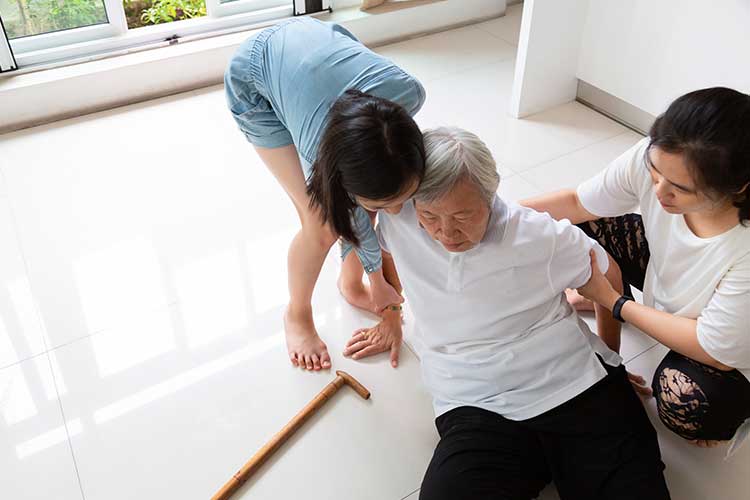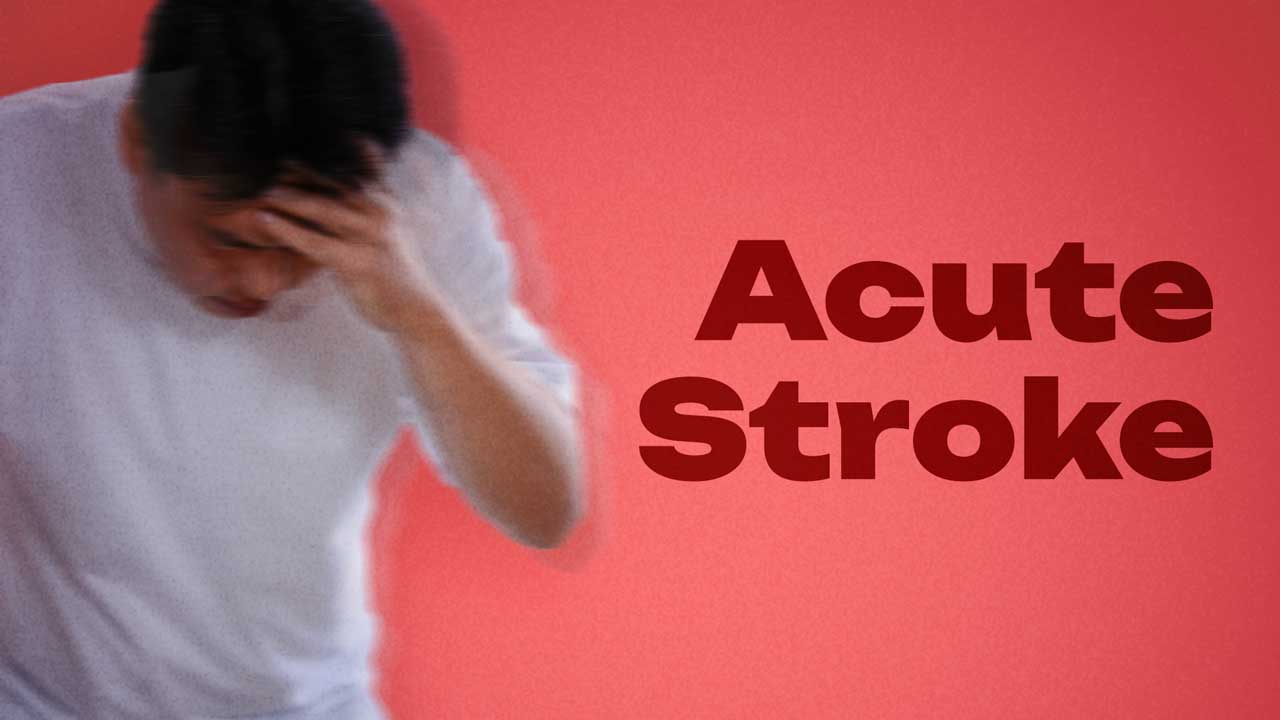In 2021, there were about 40,700 stroke events in Australia - more than 112 strokes every day (AIHW 2024).
Stroke accounts for about 4.4% of deaths in Australia, making it one of the five most common underlying causes of mortality (AIHW 2024).
Stroke is a medical emergency. Surviving and recovering from stroke is reliant on rapid recognition and treatment, as there is only a narrow window of time during which interventions will work effectively (ACSQHC 2019).
Despite this, data from 2023 found that only 31% of stroke patients presented to the hospital within three hours of symptom onset (Stroke Foundation 2025).
While stroke care in Australia has been improving, there are still issues that need to be addressed. The Acute Stroke Clinical Care Standard aims to facilitate continuous improvement and ensure patients receive the most effective care possible (ACSQHC 2019).
What is Stroke?
Read: Different Types of Strokes
Risk Factors for Stroke
The primary risk factors for stroke include:
- Hypertension
- Type 2 diabetes mellitus
- High cholesterol
- Atrial fibrillation
- Smoking
- Physical inactivity
- Unhealthy diet
- Alcohol consumption.
(Healthdirect 2023)

Acute Stroke Care in Australia
While the death rate of stroke is decreasing in Australia, there are other issues related to stroke care in Australia. The National Stroke Audit – Acute Services Report 2023 found that:
- Less than half of stroke patients spent the majority of their acute hospital stay in a stroke unit
- Only 38% of stroke patients presented to the hospital within the 4.5-hour window for thrombolysis treatment
- Australian stroke patients received less timely thrombolysis than patients in the United States and the United Kingdom.
(Stroke Foundation 2023)
What is Reperfusion Treatment?
Reperfusion treatments are used to treat ischaemic stroke by restoring blood flow and oxygen supply to the area of the brain affected by the blockage. Reperfusion treatments include:
- Thrombolysis, where medicine (such as alteplase) is used to break up and dissolve the blood clot. The medicine is usually administered intravenously.
- Endovascular therapy (also known as endovascular thrombectomy, mechanical thrombectomy or endovascular clot retrieval) involves surgically removing the clot using imaging guidance. The procedure involves inserting a catheter into (typically) the femoral artery, which is fed up to the blockage site in the brain. A wire stent or device is then used to remove the clot, restoring blood flow.
(ACSQHC 2019; Stroke Foundation 2025)
Acute Coronary Syndromes Clinical Care Standard
In 2019, the Australian Commission on Safety and Quality in Health Care released the Acute Stroke Clinical Care Standard. This standard aims to improve stroke care in Australia, with a goal of:
- Improving early assessment and management of acute and subacute stroke
- Increasing survival from stroke
- Maximising recovery from stroke
- Decreasing the risk of future stroke.
(ACSQHC 2019)
The standard contains seven quality statements related to the recognition, assessment and management of acute stroke:
1. Early Assessment

Patients experiencing a suspected stroke should be assessed immediately using a validated screening tool. An example is the F.A.S.T. (Face, Arm, Speech and Time) test:
| F - Face | Has the patient’s mouth drooped? |
| A - Arm | Is the patient able to lift both arms? |
| S - Speech | Is the patient’s speech slurred? Can they understand you? |
| T - Time | Call 000 immediately if the patient is displaying any of the above signs. |
(ACSQHC 2019)
Other screening tools include:
- National Institutes of Health Stroke Scale (NIHSS)
- Recognition of Stroke in the Emergency Room (ROSIER).
(Stroke Foundation 2025)
Other potential symptoms of stroke include:
- Weakness or paralysis (one or both sides of the body)
- Loss of sensation (usually on one side of the body only)
- Loss of vision or blurred vision (one or both eyes)
- Severe, sudden headache
- Dizziness, loss of balance or unexplained fall
- Swallowing difficulties
- Drowsiness or unconsciousness.
(Healthdirect 2023)
Be aware that the symptoms of stroke may mimic:
- Drug or alcohol-related symptoms
- Brain tumour
- Seizure or post-seizure
- Migraine
- Syncope
- Middle ear disorder.
(Ambulance Victoria 2021)
2. Time-Critical Therapy
Patients experiencing suspected ischaemic stroke are offered reperfusion treatment as soon as possible if:
- Reperfusion is deemed clinically appropriate
- Brain imaging has excluded haemorrhage, and
- Reperfusion is provided according to the Stroke Foundation’s Australian and New Zealand Living Clinical Guidelines for Stroke Management.
(ACSQHC 2019)
When considering reperfusion, the following factors should be taken into account:
- Comorbidities
- The patient’s circumstances and preferences
- Potential risks and benefits.
(ACSQHC 2019)
Reperfusion treatment is time-critical (Stroke Foundation 2025). Therefore, it is essential to note the time of symptom onset (Ambulance Victoria 2021).
Refer to Chapter 3: Acute Medical and Surgical Management of the Australian and New Zealand Living Clinical Guidelines for Stroke Management for specific treatment timeframes.
3. Stroke Unit Care
Patients experiencing stroke should be treated in a specialised stroke unit by an interprofessional team. This may comprise:
- Doctors
- Nurses
- Physiotherapists
- Speech pathologists
- Occupational therapists
- Dietitians
- Social workers
- Pharmacists.
(ACSQHC 2019)
Ideally, patients should be admitted to the unit within three hours of symptom onset (ACSQHC 2019).
4. Early Rehabilitation
Read: Post-Stroke Management and Care
The patient’s individual rehabilitation needs should be assessed within 24 to 48 hours of hospital admission. This assessment should be performed using an assessment tool such as the Australian Stroke Coalition’s Assessment for Rehabilitation: Pathway and Decision-Making Tool (ACSQHC 2019; Stroke Foundation 2025).
Assessment should help determine when discharge is appropriate and whether the patient needs to be referred onwards (ACSQHC 2019).
Patient rehabilitation should be commenced during acute care, when clinically appropriate. Avoid intensive mobilisation within 24 hours of stroke onset (ACSQHC 2019).

5. Minimising Risk of Another Stroke
Approximately 43% of people who have experienced stroke will go on to experience another within the next 10 years (Stroke Foundation 2025).
Patients should be advised on how to reduce modifiable risk factors. This may involve:
- Smoking cessation
- Maintaining a balanced diet
- Regular physical activity
- Weight loss
- Limiting alcohol consumption.
(Stroke Foundation 2017)
Patients may also be prescribed medicines such as antihypertensives, antithrombotics or lipid-modifying therapy (ACSQHC 2019).
Refer to Chapter 4: Secondary Prevention of the Australian and New Zealand Living Clinical Guidelines for Stroke Management for a comprehensive overview of medicines and treatments for secondary prevention.
6. Carer Training and Support
Carers should receive education and practical training on how to care for patients who have experienced stroke. This may comprise:
- Personal care techniques
- Communicating with the patient
- Physical handling
- Swallowing assistance
- Dietary modifications
- Emotional wellbeing.
(Stroke Foundation 2025)
Carers should also be given contact information for relevant support services prior to patient discharge (Stroke Foundation 2025).
7. Transition From Hospital Care
Prior to discharge, patients who have experienced stroke should work with clinicians to develop an individualised care plan containing:
- The patient’s goals
- Lifestyle changes to manage risk factors
- Medicines to manage risk factors
- Required equipment
- Follow-up appointments
- Referral to rehabilitation services, prevention services and other community support services.
(ACSQHC 2019)
Within 48 hours of discharge, a copy of this plan should be forwarded to the patient and their general practitioner or ongoing clinical provider (ACSQHC 2019).
Test Your Knowledge
Question 1 of 3
When should stroke rehabilitation needs ideally be assessed?
Topics
Further your knowledge
 Free
Free Free
Free
 Free
FreeReferences
- Ambulance Victoria 2021, Clinical Practice Protocols: First Responders, Ambulance Victoria, viewed 23 April 2025, https://www.ambulance.vic.gov.au/wp-content/uploads/2020/11/First-Responders-2-Nov-2020.pdf
- Australian Commission on Safety and Quality in Health Care 2019, Acute Stroke Clinical Care Standard, Australian Government, viewed 23 April 2025, https://www.safetyandquality.gov.au/publications-and-resources/resource-library/acute-stroke-clinical-care-standard-2019
- Australian Institute of Health and Welfare 2024, Heart, Stroke and Vascular Disease: Australian Facts, Australian Government, viewed 23 April 2025, https://www.aihw.gov.au/reports/heart-stroke-vascular-diseases/hsvd-facts/contents/all-heart-stroke-and-vascular-disease/stroke
- Healthdirect 2023, Stroke, Australian Government, viewed 23 April 2025, https://www.healthdirect.gov.au/stroke
- Stroke Foundation 2023, National Stroke Audit – Acute Services Report 2023, Stroke Foundation, viewed 23 April 2025, https://informme.org.au/stroke-data/acute-audits
- Stroke Foundation 2025, Australian and New Zealand Living Clinical Guidelines for Stroke Management, Stroke Foundation, viewed 23 April 2025, https://informme.org.au/guidelines/living-clinical-guidelines-for-stroke-management
 New
New 
